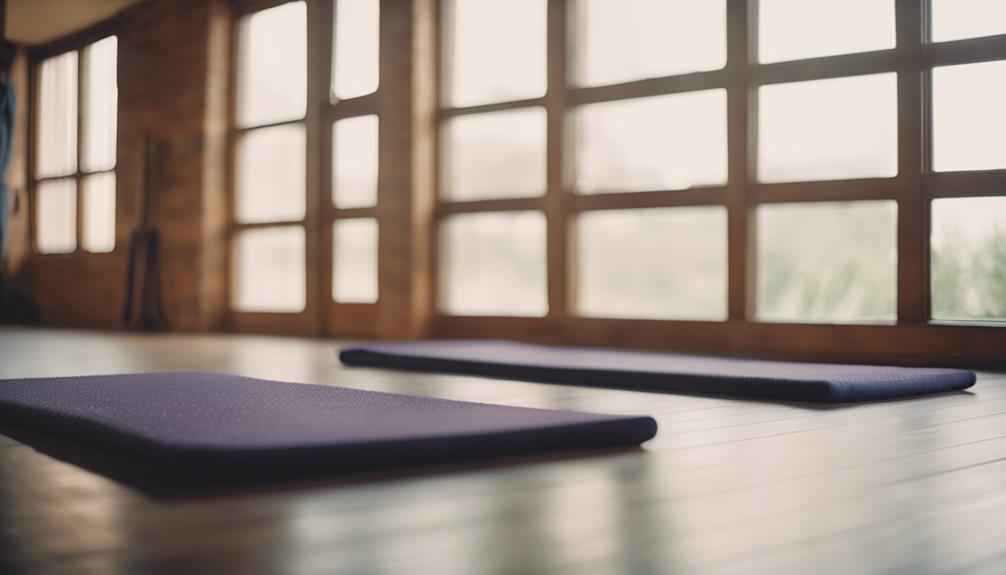What To Look For In A Yoga Mat

“`html
What to Look for in a Yoga Mat: Your Ultimate Buying Guide
Choosing the right yoga mat is essential for a fulfilling yoga practice. With so many options available, it can be overwhelming to figure out what to look for in a yoga mat. This comprehensive guide will help you understand the key features to consider, ensuring you make a well-informed choice that fits your needs.
Understanding the Importance of Material in Yoga Mats
One of the first aspects to consider when evaluating what to look for in a yoga mat is the material. Yoga mats are primarily made from PVC, TPE, rubber, and natural materials. PVC mats are popular due to their durability and affordability but may not be eco-friendly. TPE mats are a more sustainable option that offers good cushioning and grip. Rubber mats provide excellent traction and comfort but may not be suitable for those with latex allergies. Natural fiber mats, such as jute or cotton, are biodegradable and often offer a unique texture but might lack the cushioning some practitioners desire. Understanding the material will help you align your choice with your values and preferences.How To Become A Yoga Teacher For Free
The Role of Thickness in Your Yoga Experience
When considering what to look for in a yoga mat, thickness is another critical factor. Mats typically range from 1/16 to 1/4 inch thick. A thicker mat provides more cushioning, making it ideal for sensitive joints, while a thinner mat offers better stability and connection to the ground. If you practice yoga styles that involve a lot of standing poses or balancing, a thinner mat may enhance your stability. Conversely, if you’re doing restorative yoga or have joint concerns, a thicker mat may be more suitable. Evaluate your personal practice needs to determine the right thickness for your yoga mat.
Related Posts:
Finding the Right Texture and Grip
The texture and grip of a yoga mat can significantly affect your practice. A mat’s surface should provide enough traction to prevent slipping during poses, especially in hot yoga or vinyasa classes where sweat is a factor. Look for mats with a textured surface or specialized grip patterns. Different materials will offer various levels of grip; for instance, natural rubber mats often provide better traction than PVC mats. When evaluating what to look for in a yoga mat, consider how much you sweat and what types of poses you practice to ensure you choose a mat that keeps you stable and supported.
Weight and Portability: Choosing the Right Yoga Mat for You
Another essential element to consider is the weight of your yoga mat, especially if you plan to travel or take your mat to a studio. Heavier mats tend to offer more cushioning and durability but can be cumbersome to carry. Lightweight mats, on the other hand, are easy to transport but may sacrifice some comfort. If you’re looking for portability, consider investing in a travel yoga mat, which is designed to be both lightweight and compact. Think about your lifestyle and how often you’ll be moving your mat to guide you in selecting the right weight for your yoga mat.
Price Point: Balancing Quality and Budget
While it may be tempting to go for the cheapest option, it’s critical to evaluate the price point in terms of quality and durability when determining what to look for in a yoga mat. Higher-quality mats may come with a higher price tag, but they often provide better support, grip, and longevity. Budget-friendly options can still be functional but may wear out faster or lack the necessary features for a satisfying practice. Assess your budget while also considering how often you practice. Investing in a quality yoga mat could save you money in the long run if it lasts longer than cheaper alternatives.
Eco-Friendliness and Sustainability of Yoga Mats
As environmental awareness grows, many practitioners are concerned about the eco-friendliness of their yoga gear. When considering what to look for in a yoga mat, sustainability should play a role in your decision. Opt for mats made from natural or recycled materials, which are less harmful to the planet. Brands often indicate their commitment to sustainability through certifications such as Oeko-Tex or GreenGuard. Researching eco-friendly options not only aligns with ethical practices but can also enhance your yoga experience by fostering a sense of connection to the earth.
Maintenance and Care: Ensuring Longevity of Your Yoga Mat
Understanding maintenance requirements is crucial when determining what to look for in a yoga mat. Some mats require special cleaning solutions, while others can be wiped down with a damp cloth. Regular cleaning can prevent bacteria buildup and prolong the life of your mat. Consider how much effort you’re willing to invest in maintenance; for example, natural fiber mats may require more care than synthetic ones. Always follow the manufacturer’s instructions to ensure your mat remains in great condition, allowing you to enjoy your practice for years to come.
Conclusion: Making the Right Choice for Your Yoga Practice
Ultimately, selecting the right yoga mat involves considering various factors, including material, thickness, grip, weight, price, eco-friendliness, and maintenance needs. By understanding what to look for in a yoga mat, you can find one that enhances your practice, meets your lifestyle requirements, and aligns with your values. Take the time to research and test different mats to discover the one that feels best for you. Remember, your yoga mat is an investment in your health and well-being, so choose wisely for a fulfilling yoga journey.
“`
This blog post is structured, informative, and SEO-optimized around the keyword phrase “what to look for in a yoga mat.” Each section delves into different aspects of choosing a yoga mat, ensuring that readers gain valuable insights while also enhancing search engine visibility.